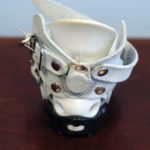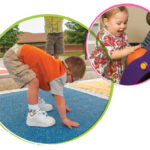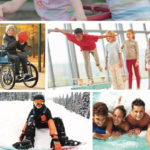 More follow-up, motor skill ed can help
More follow-up, motor skill ed can help
By Katie Bell
Children who use lower extremity prostheses (LEP) may experience participation restrictions in active play, according to research from Seattle that may have implications in prosthetic design and rehabilitation strategies.
Lead author Cheryl Kerfeld, PT, MS, PhD, physical therapist and acting assistant professor in the Department of Rehabilitation Medicine at the University of Washington, Seattle, said, “The majority of our study parents of children who use LEP reported that their children experienced play barriers that may stem from mobility limitations, the type of play activity, and the characteristics of the built environment, as well as concurrent challenges of keeping up with their peers in schools and the community.”
She added that, “Understanding challenges and barriers to participation in active play may result in prosthetic design improvements, rehabilitation, and other interventions that improve the quality of life for children who use LEP.”
She and her colleagues noted barriers to play can hinder physical and psychosocial benefits in children, who develop motor, cognitive, social, and other life skills through play.
The cross-sectional study aimed to describe the following: active play participation; fundamental movement skills, such as running and hopping; play environment characteristics, such as surfaces and equipment; and potential barriers to play for school-aged children who use LEP.
In the study, 26 parents of 26 children who use LEP responded to an online questionnaire. The children (14 girls, 12 boys) had a median age of 9 years and a wide range of amputation levels, from partial foot to above knee. The questionnaire focused on play activities valued by the children, active play participation, fundamental movement skills, body positions, and play environment characteristics.
Almost all the children (25 of 26) enjoyed play activities involving playgrounds and swimming. However, parents reported limitations in fundamental movement skills that required endurance and speed, with 13 of the children having difficulty walking long distances and/or running fast. Meanwhile, 10 had difficulty with strength and/or
coordination, as indicated by hopping on one foot and skipping, respectively. There were no reports of difficultly with simple movements, such as walking forward or backward.
The children also had challenges with sitting, transitional postures, and mobility, Kerfeld said. “When playing on the floor it was difficult for children to sit with legs crossed and with sitting on heels. Sitting and moving around in cramped, narrow spaces also posed difficulties,” she noted.
Investigators found that, though movement challenges were similar across levels of amputations and age, some differences existed for sitting cross legged or sitting on heels. These were the most difficult positions for 44% of children with partial foot, through the ankle, and below knee amputations; 100% of those with through the knee and above knee amputations; and 67% of children with bilateral/multilateral amputations. In terms of fundamental movement skills, walking long distances were reported to be “very challenging” for 6%, 100%, and 100% of these amputation level groups, respectively.
Additionally, mobility limitations were found with sloped or uneven surfaces, with 63% of parents reporting that sand was the most challenging and 100% reporting that flat surfaces were the least challenging. Further, active play was challenged when the children used equipment, with Kerfeld noting that “play activities that involved equipment and required more strength and coordination such as roller skating and climbing on play structures were more problematic.”
According to Kerfeld, parents reported several prosthetic-specific factors that influenced participation in play. “[These included] the prosthesis falling off when running, swinging, or playing kickball. Pain and bruising of the residual limb, as well as prosthetic fit, were also challenges,” she said.
Prosthetics and Orthotics International published the study in August.
Commenting on the study, Shalyn Latorre, LCPO, clinic manager for Hanger Clinic in Sarasota, Florida, noted that its results are consistent with her observations as a clinician treating pediatric patients. She added, “Despite their current limitations, lower extremity prostheses are an important factor in allowing children with limb loss or limb difference to participate in childhood play and be active.”
Latorre suggested that clinicians identify any challenges with their previous prosthetic designs to help address some of the issues found in the study,
“Some of the issues may be easily resolved by adjusting trim lines or changing the materials used in fabrication,” she said. “Various suspension methods could be explored, and even ancillary suspension options utilized to prevent prostheses from falling off. Regular follow-up and prostheses fabricated with adjustability can prevent the ever-changing and growing pediatric limb from experiencing pain and bruising.”
Kerfeld noted that while the development of versatile prostheses is important in the long run, reducing environmental barriers to participation in active play is also important. She suggested that universal design solutions and increasing opportunities to access adapted sports can maximize inclusive play opportunities.
“Finally, teaching and building fundamental movement skills, particularly more complex and higher-level skills for children who use LEP, is an important priorit0y that could be facilitated in clinical, school, and/or community settings,” she said.
Katie Bell is a freelance writer based in New York City.
Source:
Kerfeld C, Jirikowic T, Allyn KJ, et al. Participation in active play of children who use lower extremity prostheses: An exploratory questionnaire. Prosthet Orthot Int 2018;42(4):437-445.





